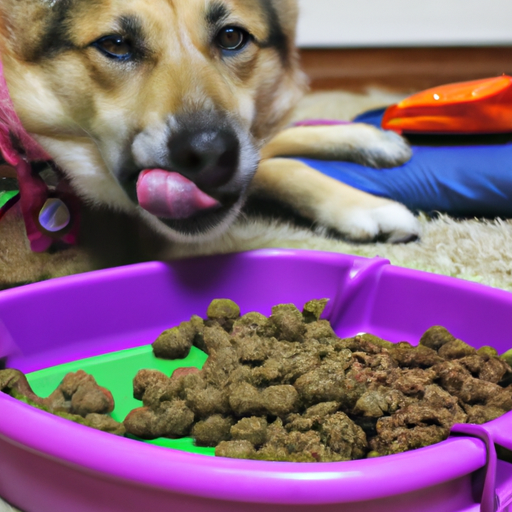“`markdown
What are Kibbles for Dogs?
1. Introduction to Kibbles
As a caregiver for your canine companion, you’ve likely come across “kibbles” in your quest for the perfect pet food. But what exactly are kibbles? Kibbles are small, dry bits of dog food that are typically made from a combination of meats, grains, vegetables, and other ingredients. They are cooked and then extruded, or forced through a specially shaped hole, to create their unique shape and size.
2. Ingredients of Kibbles
Kibbles can be made from a wide variety of ingredients, but they typically include:
- Protein sources: Beef, chicken, turkey, fish, or plant-based proteins like lentils or peas.
- Grains: Rice, wheat, corn, barley, or oats. Grain-free kibbles may use potatoes or legumes instead.
- Vegetables and fruits: Carrots, peas, apples, blueberries, etc.
- Vitamins and minerals: Essential for overall health and well-being.
| Ingredient | Purpose |
|---|---|
| Protein Sources | Build and maintain muscles and tissues |
| Grains | Provide energy |
| Vegetables & Fruits | Provide essential vitamins, minerals and fiber |
| Vitamins & Minerals | Ensure overall health and well-being |
3. Benefits of Feeding Kibbles
Feeding kibbles to your dog can have several benefits:
- Dental health: Chewing kibbles can help clean your dog’s teeth and reduce plaque build-up.
- Convenience: Kibbles are easy to store and feed, making them a convenient choice for busy caregivers.
- Nutritionally balanced: Most kibbles are designed to provide a balanced diet for dogs.
4. Potential Drawbacks of Kibbles
But while kibbles can be a great choice, they’re not without potential drawbacks:
- Some dogs may not find them as appetizing as wet or fresh food.
- Lower-quality kibbles may contain fillers, artificial additives, or low-quality ingredients.
- Some dogs may have dietary sensitivities or allergies to certain ingredients commonly found in kibbles.
5. Choosing the Right Kibbles for Your Dog
Choosing the right kibbles for your dog involves considering their age, size, breed, activity level, and any special dietary needs they may have. Look for high-quality kibbles that list a source of animal protein as the first ingredient, and avoid those that contain artificial colors, flavors, or preservatives.
FAQs
Q: Can I feed my dog only kibbles?
A: Yes, as long as it’s a high-quality, complete and balanced diet, it should provide all the nutrients your dog needs.
Q: Are grain-free kibbles better for my dog?
A: Not necessarily. Unless your dog has a specific grain allergy, grains can be a healthy part of their diet.
Q: How much kibbles should I feed my dog?
A: It depends on their age, size, breed, and activity level. Always follow the feeding guidelines on the kibble packaging.
Q: Can puppies eat adult dog kibbles?
A: Puppies have different nutritional needs than adult dogs, so it’s usually best to feed them a puppy-specific formula.
“`



